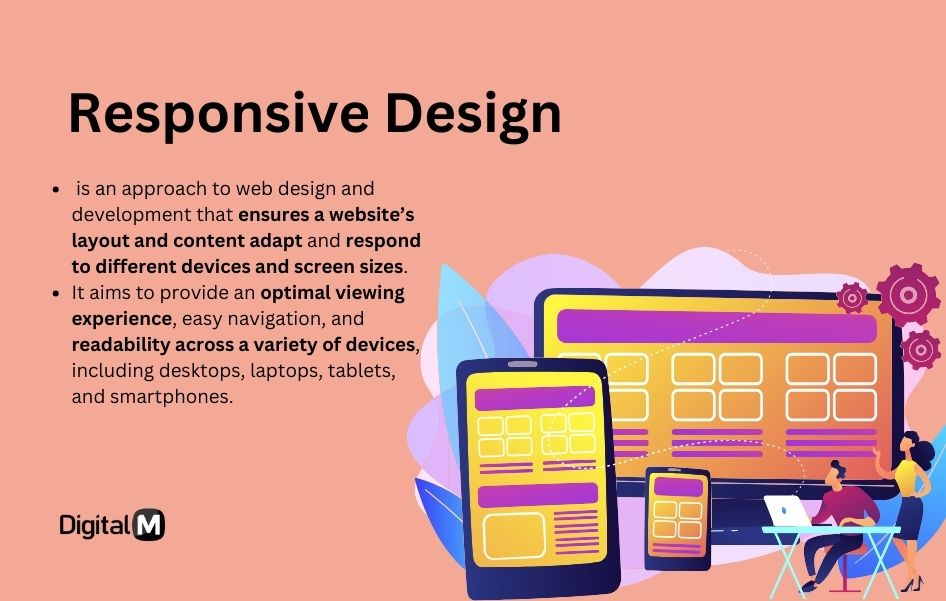Responsive Design
Responsive design is an approach to web design and development that ensures a website’s layout and content adapt and respond to different devices and screen sizes. It aims to provide an optimal viewing experience, easy navigation, and readability across a variety of devices, including desktops, laptops, tablets, and smartphones.
Responsive design is like having a flexible website that adjusts itself to look good and work well on any device, whether you’re using a computer, tablet, or phone.
Key Points:
Flexible Layout: Elements on the web page adjust and reorganize based on the screen size and resolution.
Media Queries: Responsive design often utilizes CSS media queries to apply different styles or layouts based on characteristics like screen width.

Features of Responsive Design:
Fluid Grids: Design elements are sized proportionally, allowing them to adapt to different screen sizes.
Flexible Images: Images are coded to scale with the size of the viewport, preventing them from becoming too large or too small.
Advantages:
Improved User Experience: Users get a consistent and user-friendly experience regardless of the device they use.
Single Codebase: Responsive design often involves creating a single version of a website that works for all devices, simplifying maintenance.
Mobile-First Approach:
Some responsive designs follow a mobile-first approach, where the design starts with mobile devices in mind and progressively enhances for larger screens.
Testing Responsiveness:
Developers use tools or manually test websites on various devices to ensure responsiveness and identify areas for improvement.
Example:
On a responsive website, the navigation menu might appear as a horizontal bar on a desktop but transform into a dropdown menu on a smaller screen like a smartphone.
Also read: Why is Mobile SEO Important for Every Business?
Why it Matters:
Device Diversity: With users accessing websites from various devices, responsive design ensures a consistent and enjoyable experience.
SEO Benefits: Search engines often prioritize mobile-friendly websites in their rankings, making responsive design beneficial for SEO.
Future-Proofing: As new devices with different screen sizes emerge, responsive design helps future-proof a website, reducing the need for separate designs for each device.
In summary, responsive design is an approach to web design that ensures a website adjusts its layout and content to provide an optimal viewing experience on various devices. It involves flexible grids, media queries, and other techniques to create a consistent and user-friendly interface across desktops, tablets, and smartphones.

